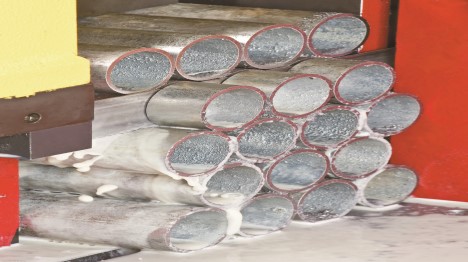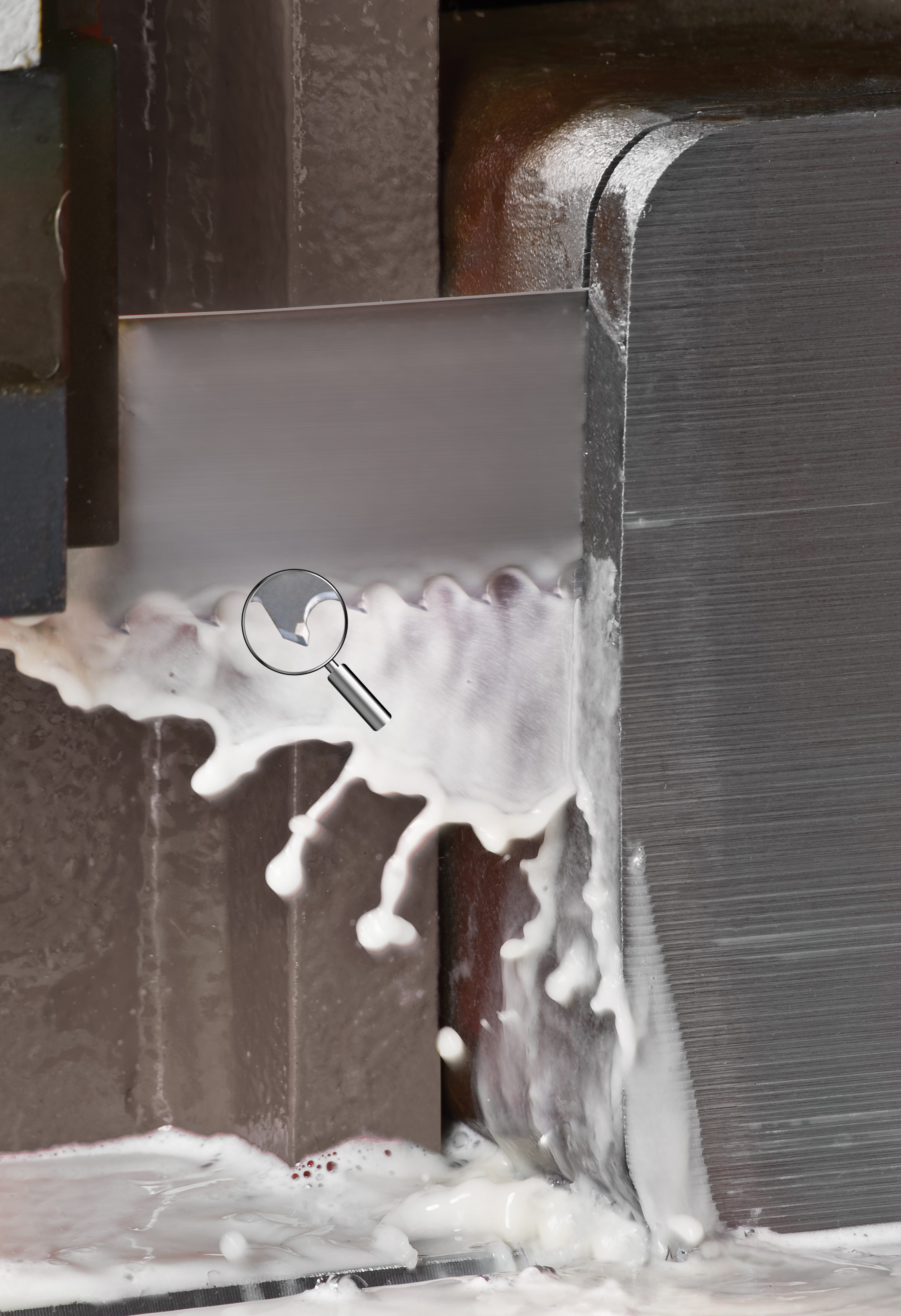For best sawing results, know how material characteristics and sizes affect the cut.
Jay Gordon, North American Sales Manager/Saws & Hand Tools, The L.S. Starrett Company
All materials present unique cutting issues. Understanding the material characteristics before starting to cut presents the best opportunity to achieve the longest band saw blade life and production results. This article presents some general rules of thumb .
Soft Materials
Soft materials typically include carbon steels, aluminum, coppers, etc. In some cases, soft materials can be as difficult to cut as hard materials. Soft materials tend to load the tooth gullets, resulting in premature wear and in a worst case scenario, can even lead to tooth strippage.
When the tooth gullets are filled, only the very tip of the tooth is doing any cutting. This can cause chip loading in the gullets and excessive forces on each tooth. The basic rule of thumb for tooth selection on any given material is to have no fewer than 3 teeth and no more than 10-14 teeth, in the material at all times. Typically this allows the teeth to grab a chip and release it before the gullets are full. As soft material tends to load quicker, it is imperative to stay away from a blade with a fine pitch. Generally speaking, in most cases and dependent upon the specific soft material, it is better to select a coarser blade pitch versus a finer one.
Hard Materials
Hard materials such as Inconels, Monels, Hastalloys, etc. present a different set of problems. Based on the cutting properties of these materials, it is very unlikely that the gullets will fill, so blade selection should reflect that. The teeth have a much more difficult time of engaging the material and typically pull a much thinner chip. This will allow selecting a blade which follows the higher end of the rule of thumb because more teeth will be engaged in the cut than would be possible when sawing soft material.
For example, cutting 3" aluminum using a 1.4/2 tooth pitch would stay within the criteria of having a minimum of 3 teeth in the material at all times. Based on the cutting characteristics of aluminum, this would typically work well. However, using the same blade to cut a similar size piece of Inconel 718 would cause premature blade failure due to the teeth being too coarse to engage and pull the necessary chip load. In this case, choosing a 3-4 tooth would likely be better as there would be more teeth engaged without concern of loading the gullets, resulting in optimal sawing productivity and maximum blade life.
Size Does Matter
The size of the material determines which tooth pitch to use. In general, the smaller the material/part, the finer the tooth pitch should be. Alternatively, a coarser tooth pitch is desirable for larger parts.











Talk to Us!
Leave a reply
Your email address will not be published. Required fields are marked *